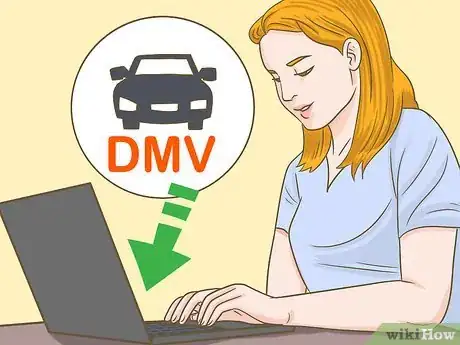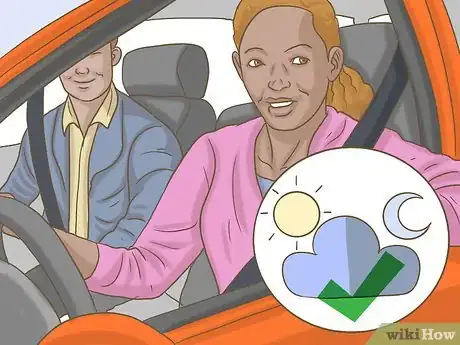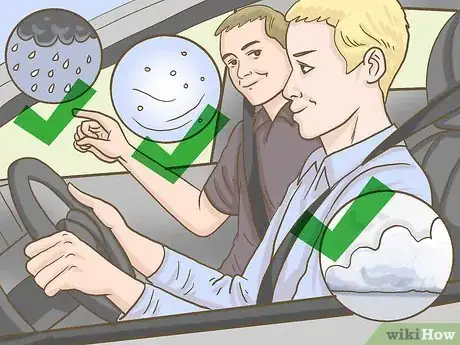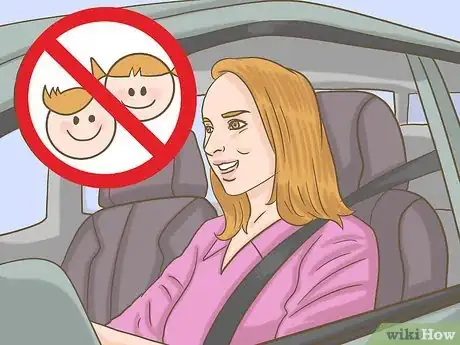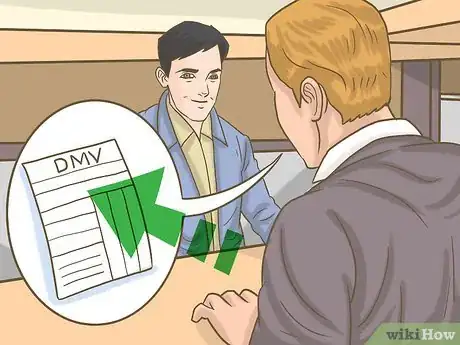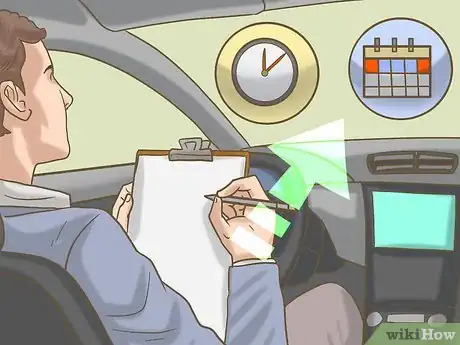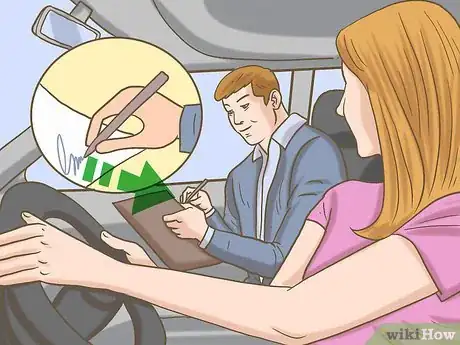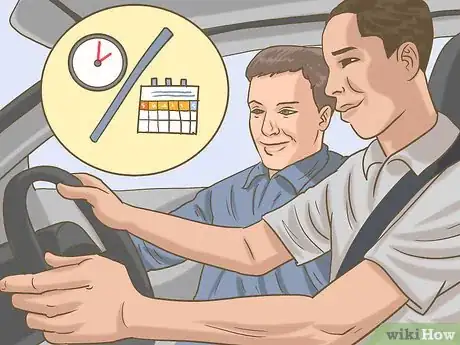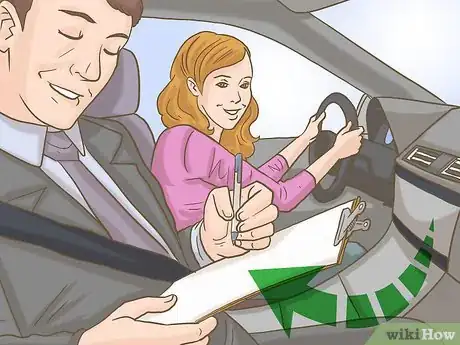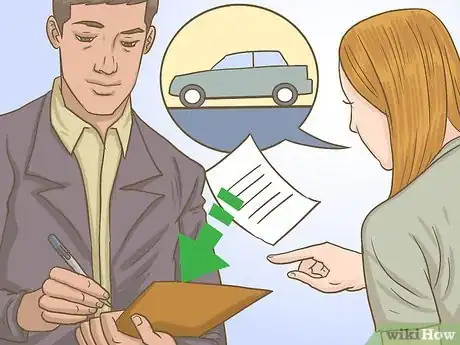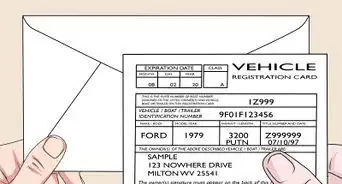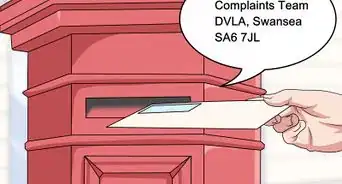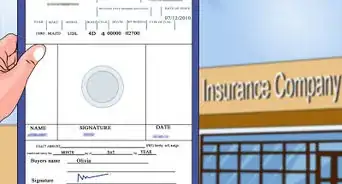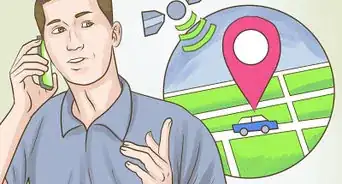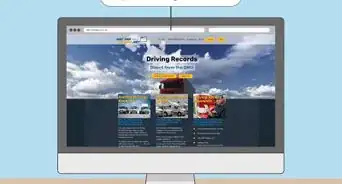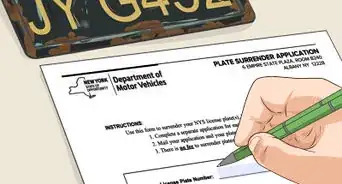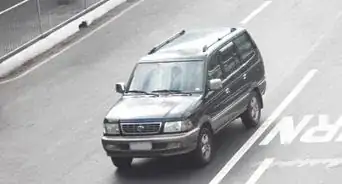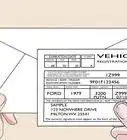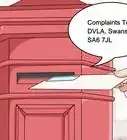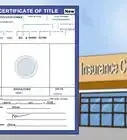This article was co-authored by Bruce Storrs. Bruce Storrs is a Driving Instructor and the President & CEO of North County School of Driving in San Marcos, California. With more than 31 years of experience, he specializes in teaching teens and adults safe driving behaviors in the classroom, online, and behind the wheel. Bruce earned a BA and MA from San Diego State University.
There are 9 references cited in this article, which can be found at the bottom of the page.
This article has been viewed 90,872 times.
Before you can officially qualify for a driver's license, most US states require you to document a minimum amount of practice hours in a driver's log. The specific log requirements vary from state to state, but all are designed to show proof of your driving skills. After receiving your driver's log from the DMV, fill it out carefully with a parent or guardian as you reach different driving milestones. When you're ready to take your driving test, your log will show that you're prepared and qualified for a license.
Steps
Meeting Logging Requirements
-
1Get a learner’s permit before you log driving hours. To begin logging hours, you must get a learner's permit. Most states allow individuals to apply for a learner's permit when they are 14, 15, or 16 years old. Research the requirements for a learner's permit in your state and pass the test before you start driving practice.[1]
- To find the specific age requirement for your state, visit the DMV for your state. If your state is California, for example, you would visit: https://www.dmv.ca.gov/
-
2Complete your logging hours during the day and night. Most states require a certain amount of hours to be completed during both day and night. Check the requirements for your state by contacting your local DMV. Make sure you meet the minimum amount of day and night hours before applying for a driver's license.[2]
- In some states, those with a learner's permit cannot drive during the late hours of the night (usually 12-5 AM) unless under specific circumstances.
Advertisement -
3Drive under all of the required weather conditions. Most states require individuals with a learning permit to complete their hours under a variety of weather conditions. Depending on your state, you may need to drive in rain, snow, fog, and other adverse conditions.
- Stay safe while driving in poor weather conditions. Bring an adult driver who is familiar with driving in bad weather and who will know when it's unsafe to drive.
-
4Do not drive with minors in the car. In most states, driving with minors in the car is illegal until you earn your full driver's license. While you are logging practice hours, do not drive with children under 18 in the car. If you get pulled over, you may face legal repercussions.[3]
- Some states make an exception for driving with minors who are a part of your immediate family. Check with your local DMV to find out whether you can log hours with young family members in the car.
-
5Always have your learner's permit with you while logging hours. If you get pulled over, not having your ID with you can result in fines or legal repercussions. Anytime you practice driving for your log, make a mental note to bring your permit with you.[4]
Recording Your Driving Sessions Correctly
-
1Ask the DMV for your state's official driver's log. Every state's log is formatted differently and has specific driving requirements. After you earn your learner's permit, you should receive an official driver's log. If you do not, ask a DMV employee for a log.[5]
- Not every state requires new drivers to log their practice hours. Check your state's requirements on the DMV's website before you take the learner's permit test.
-
2Mark the date and time on your driver's log. Most driver's logs have a spot for the date and time to keep track of specific practice sessions. Record the date, start time, and end time of each practice on your log to keep careful track of your progress. Try to record your practices in the log on the same day that they happen to keep the information as accurate as possible.
- If you practiced driving on November 3rd from 7-7:30 PM, for example, you would record the date as "11/3/20xx," the start time as "7:00 PM," and the end time as "7:30 PM."
- Some driver's logs also require you to record the weather conditions during your practice session. You might put, for example, "sunny," "rainy," "snowy," "foggy," or "windy."[6]
-
3Record what was practiced during the driving session. Many official driver's logs have space for you to record what you did during the driving session. This helps you and the DMV keep track of your progress. Try to be specific, so you have written proof of all that you've practiced while driving.[7]
- If you practiced parallel parking, for example, you might write "parallel parking" in that space.
-
4Have a licensed adult initial each log session. To qualify as a loggable session, your practice must be done with a licensed adult. In some states, this must be your legal parent or guardian while in others, it can be any licensed adult over 21. Ask your adult to initial the designated space to verify that you completed your practice session.[8]
-
5Check if your state has a limit on how many hours can be logged each week. In some cases, states require permit holders to pace themselves when logging hours. You may only be able to count 10-15 hours per week as loggable practice time. Contact your local DMV and ask about any weekly limitations, especially if you are practicing more than 10 hours a week.[9]
Submitting a Driver's Log
-
1Complete the number of required hours for your state. States generally require permit holders to record between 40-50 hours of practice sessions before their driver's log is finished. In most cases, the required amount will be listed on the log. If it is not, contact your local DMV or check your state's DMV website.[10]
- Make sure that you have completed the required amount of driving hours at night within your overall amount of practice hours. Again, this number varies depending on your state.
-
2Have your parent or guardian sign the bottom of the log. Most driver's logs have space at the bottom for your parent or legal guardian to certify that you have completed the required amount of practice. The signature also confirms that all information recorded on the form is correct. They may need to supply their signature, the date, and their own driver's license number.[11]
-
3Turn in your driver's log when you take the driving test. In states where driver's logs are required, you will need to bring your log with you to the DMV. Before you go, briefly read through your log to make sure that you have met the required hours, that all information recorded is accurate, and that your parent or guardian has signed the form.
Expert Q&A
-
QuestionDo you have to log driving hours in California?
 Bruce StorrsBruce Storrs is a Driving Instructor and the President & CEO of North County School of Driving in San Marcos, California. With more than 31 years of experience, he specializes in teaching teens and adults safe driving behaviors in the classroom, online, and behind the wheel. Bruce earned a BA and MA from San Diego State University.
Bruce StorrsBruce Storrs is a Driving Instructor and the President & CEO of North County School of Driving in San Marcos, California. With more than 31 years of experience, he specializes in teaching teens and adults safe driving behaviors in the classroom, online, and behind the wheel. Bruce earned a BA and MA from San Diego State University.
Driving Instructor For new drivers, that would be recommended, especially if you log what you practiced each day. In California, you're supposed to get 50 hours of practice driving time with your parents, so that would be a great way to keep track of the number of hours that you're getting to log.
For new drivers, that would be recommended, especially if you log what you practiced each day. In California, you're supposed to get 50 hours of practice driving time with your parents, so that would be a great way to keep track of the number of hours that you're getting to log. -
QuestionHow do I practice for my driving test in California?
 Bruce StorrsBruce Storrs is a Driving Instructor and the President & CEO of North County School of Driving in San Marcos, California. With more than 31 years of experience, he specializes in teaching teens and adults safe driving behaviors in the classroom, online, and behind the wheel. Bruce earned a BA and MA from San Diego State University.
Bruce StorrsBruce Storrs is a Driving Instructor and the President & CEO of North County School of Driving in San Marcos, California. With more than 31 years of experience, he specializes in teaching teens and adults safe driving behaviors in the classroom, online, and behind the wheel. Bruce earned a BA and MA from San Diego State University.
Driving Instructor We usually start with a 2 hour drive lesson. Then, we recommend that the parents provide their children with 20 hours of practice time. Before they do their second lesson here, they're required to do three, two hour lessons with the driving school. So in between each lesson, we would like the parents to provide them with 20 hours, so they can log it. Each time they drive, the parents should try to expose them to different types of driving situations: city driving and residential driving. That's definitely the best way to practice.
We usually start with a 2 hour drive lesson. Then, we recommend that the parents provide their children with 20 hours of practice time. Before they do their second lesson here, they're required to do three, two hour lessons with the driving school. So in between each lesson, we would like the parents to provide them with 20 hours, so they can log it. Each time they drive, the parents should try to expose them to different types of driving situations: city driving and residential driving. That's definitely the best way to practice.
References
- ↑ https://www.dmv.org/id-idaho/drivers-training.php
- ↑ https://www.dmv.org/articles/logging-behind-the-wheel-practice-hours/
- ↑ https://www.dmv.org/articles/logging-behind-the-wheel-practice-hours/
- ↑ https://drivers-license.dmv.org/oh-ohio/new-license/driving-practice.php
- ↑ https://www.dmv.org/articles/logging-behind-the-wheel-practice-hours/
- ↑ https://iowadot.gov/mvd/driverslicense/coach.pdf
- ↑ http://www.ct.gov/dmv/lib/dmv/20/29/howto.pdf
- ↑ https://www.dmv.ca.gov/portal/dmv/detail/pubs/dl603/teen_htm/drivinglog/
- ↑ https://www.dmv.org/nc-north-carolina/teen-drivers.php
About This Article
Logging your driving hours for your learner’s permit only takes a few seconds and is necessary for getting your license. If you haven’t already received your log, you can collect one from your local DMV. To fill out your log, start by writing the date and the times that you started and ended your driving session. Then, write what you practiced in the relevant box, such as parallel parking, crossroads, or following directions. Some logs also require you to write down the weather conditions of each driving session. Some states need you to do a certain amount of driving during the day and night. Finally, get the adult you were driving with to write their initials to confirm the session. For more tips, including how to submit your driver’s log, read on!
